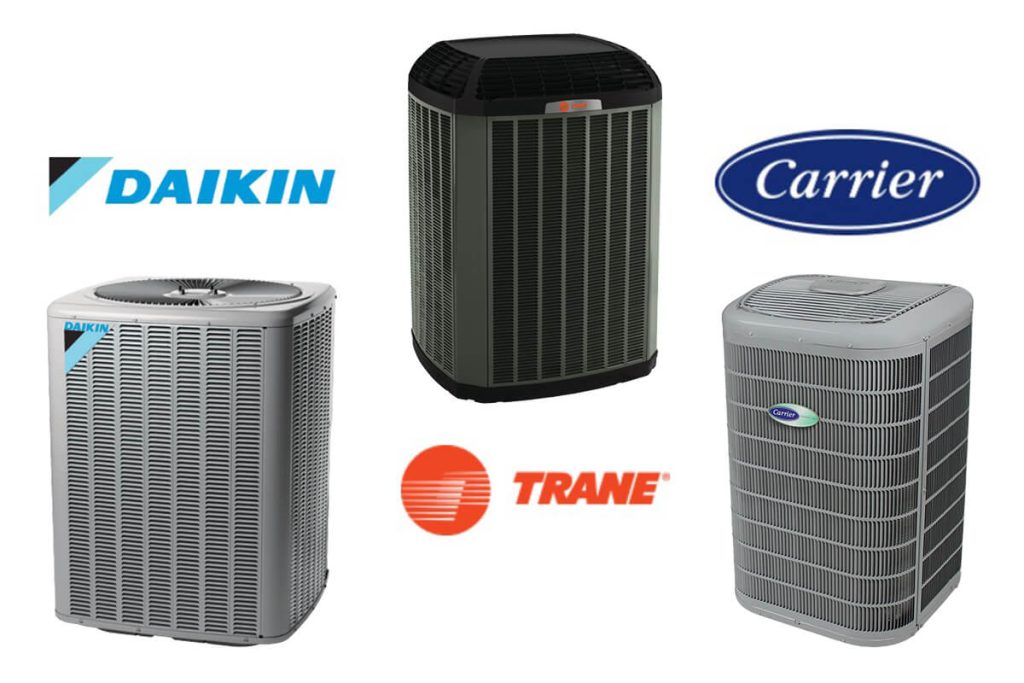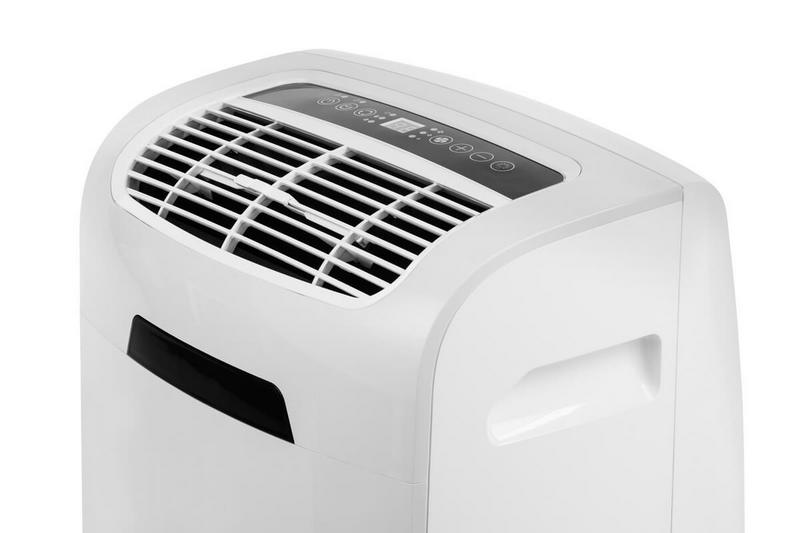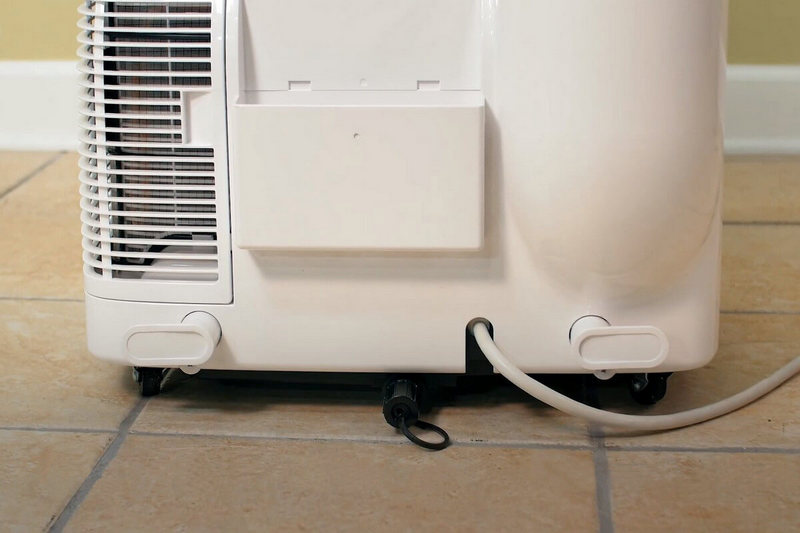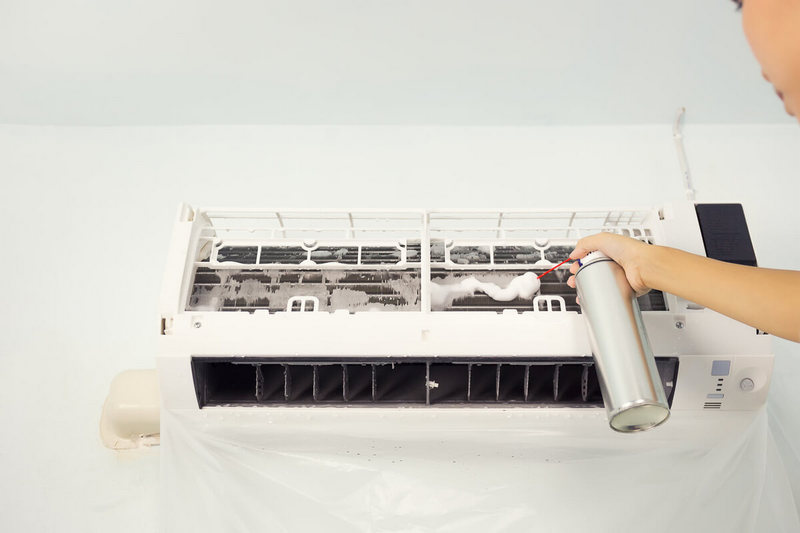Whether you’re concerned about power consumption, indoor humidity, or moisture accumulation, using the dry mode in AC is a great solution. However, which is the best temperature for dry mode during summers or winters?
While most people want to use the latest HVAC systems with cool mode and dry mode temperature settings, they seldom know the right temperature for running each option. If you’re confused about how to set your temperature to the optimal level, you’ve landed on the right page.
In this discourse, you’ll find all you need to know about the dry mode in AC to start using it right away.
What is a Dry Mode in an Air Conditioner?
The dry mode temperature setting is a relatively new option in air conditioning systems but is common in the latest models. Typically, the dry mode is depicted on your AC remote with a symbol of a water drop. In contrast, the cool mode is displayed by a snowflake symbol.
But, is there any difference between the dry mode and cool mode? And how do both affect the environment in your room? The primary function of the dry mode is to reduce humidity while bringing the temperature down in a particular environment.
What is the Function of Dry Mode?
Most people attribute this to a common misconception that humidity and high temperatures are almost synonymous. However, that’s not the case. Even in cool temperatures or during winters, the humidity levels can get relatively high, and you might need to use the dry mode in your AC.
But, this setting is instrumental during considerably wet weather such as rainy and monsoon seasons. In these seasons, you probably don’t want the temperature to go very low but need to reduce the humidity.
So, the dry mode can help you remove the discomfort of humidity and restore the freshness in your indoor environment without unnecessarily bringing the temperature down.
Even though the dry mode will not remove all the moisture in your room, you should know which temperature to use it on for optimal results. Read through the sections below to determine the best temperature for dry mode in your air conditioner.
Related: What Does ECO Mean on AC Unit
How Do an Air Conditioner Dry Mode and a Dehumidifier Different?
If you’re looking to decrease the moisture levels and solve water damage problems around your home, investing in a dehumidifier is the best option. But, an air conditioner with a dry mode option will work just as well if you operate it in the correct way.
Although both devices offer the same benefits, they are two completely different gadgets curated for their respective purposes. For example, an air conditioner will mainly work to dehumidify your space while decreasing the temperature level, but a dehumidifier cannot do that.
Air Conditioner Dry Mode Vs. Dehumidifier
If you’re wondering whether an air conditioner or dehumidifier is better for your home, we’ve got you covered. Check out this list of differences and similarities at a glance to get some insight on the subject.
Differences:
- A dehumidifier and AC dry mode deal with moisture differently. An AC running in dry mode transfers the extracted moisture from the condensate towards a drainage tube, while a dehumidifier stores it in a moisture tank.
- The dehumidifier transports the air through cool and hot coils to remove its moisture and releases it into the room. On the other hand, an AC running in dry mode transports it across cooling coils and releases it after reducing its temperature.
- A dehumidifier does not control the temperature, while an AC on dry mode can reduce the room temperature by releasing cold air.
Similarities:
- Both dehumidifiers and dry mode ACs help improve air quality in your room.
- Both gadgets work to provide proper ventilation in a given indoor space.
- ACs and dehumidifiers can help remove allergens and resolve any health issues due to air moisture.
- Dehumidifiers and ACs have drainage systems because both need to store and expel moisture after extracting it from the indoor space.
Read Also: Do I Need to Drain My Portable Air Conditioner
When Should I Run My AC in Dry Mode?
If you want to use your AC in dry mode, you should do so in the following situations:
- When the humidity levels are high, even if the temperature is low.
- You want your room temperature to be comfortable without being too chilly.
- To save electricity.
- To lower your electricity costs.
How Long to Use Dry Mode in AC?
Remember, using the dry mode for too long in your AC can lead to discomfort and health problems. That’s why you should make sure you use it in moderation so that you can enjoy moisture-free air without facing any additional issues.
The recommended duration to run an AC in dry mode is around 2-3 hours only. This is because the AC will work to remove excess humidity from your indoor space during this period.
If you leave it running beyond this time limit, it can cause dry skin and throat irritation.
Can I Use Dry Mode in Winter?
You can use the dry mode on your air conditioner during winters. While most people assume that you’ll only need dehumidification during summers, humidity comes with low temperatures.
Mainly, the dry mode works to absorb any extra moisture and adjust the indoor temperature to a favorable level. So, even if the moisture levels inside your home are high during winters, you can use the dry mode on your AC to make the environment comfortable.
However, if you are using your AC in dry mode during cooler months, you won’t need to keep it running for very long. Just keep it running until the moisture level is according to your preference.
Does Dry Mode Save Electricity?
As mentioned above, an AC in the dry mode will consume less energy than a dehumidifier. But, you can conserve more energy when using dry mode if you run your AC in the best temperature for dry mode.
If you run it on full blast, even in winter, it will remove the extra moisture but make your indoor temperature quite uncomfortable. Thus, if you adjust your AC to an ideal temperature in dry mode, the compressor will run for a shorter time, reducing your power consumption.
So, adjust the temperature according to the condition inside your room to create the ideal indoor environment. Mainly, the fan speed is slow while the compressor runs for a shorter period in dry mode. The energy consumption level is quite low compared to running your AC on cool mode or using a dehumidifier.
Conclusion
In a nutshell, the best temperature for dry mode in your air conditioner is anywhere around 25°C-30°C. This temperature level lets your AC remove excess moisture effectively without overworking the compressor.
Moreover, ensure to use dry mode only when the humidity level is around 30%-70% in your room. If you turn it on when the levels are lower, the indoor air will dry and irritable, leading to several health issues.







